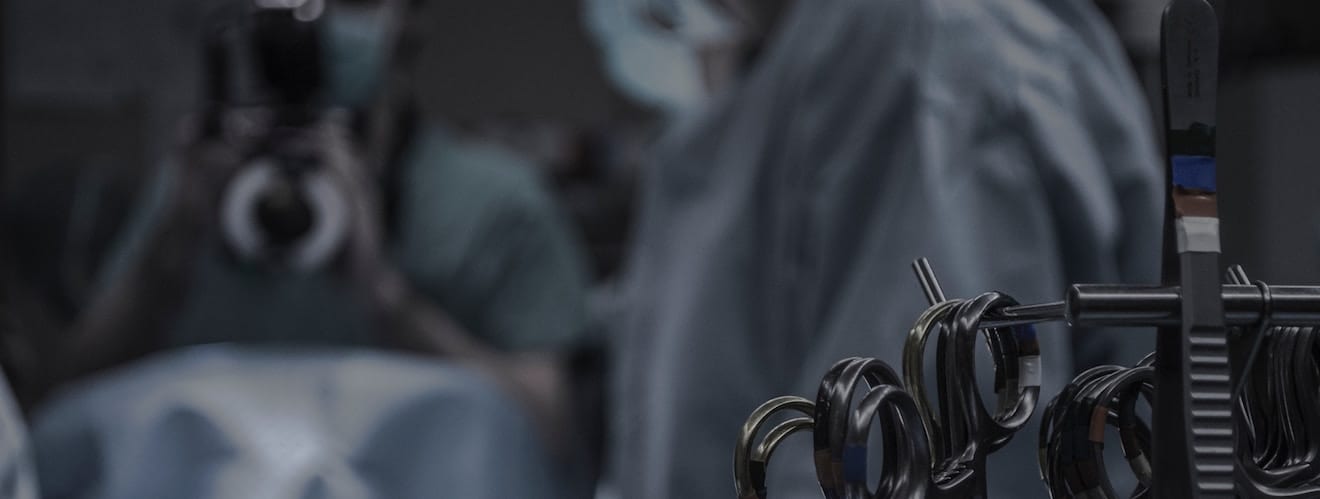At ServiceMax from GE Digital, we’re always interested to learn how people found their way into the field service industry. And what better place to start than our own team? I recently sat down with Derek Lindskog, a member of our professional services team and a former medical device technician who traded his in-the-field toolkit to help service organizations find a modern approach to field service management with ServiceMax.
What was your first role in the field service industry?
 Derek Lindskog: My first job in the medical devices industry was for a third party that specialized in refurbished medical devices. My most recent role before ServiceMax was with a regional medical device distributor. I worked there for five years, specializing in surgical microscopes.
Derek Lindskog: My first job in the medical devices industry was for a third party that specialized in refurbished medical devices. My most recent role before ServiceMax was with a regional medical device distributor. I worked there for five years, specializing in surgical microscopes.
What attracted you to that initial role with the distributor?
At the time, my brother-in-law worked for the distributor and he encouraged me to check it out. The role, focusing on both service and sales, sounded interesting. It was a challenge, for sure, but I loved it. It was also a huge learning experience.
What was a typical day for you as a field service technician?
There was no such thing as a typical day. A lot of it involved break/ fix scenarios, which led to some serious prioritization if I had things scheduled, like preventative maintenance, but most of my day would be spent putting out fires. I would address the fires first, and then look at what else on site might need service. Sales was a big part of what I did in this role, so a portion of my time was dedicated to checking on new opportunities.
You really jumped into this profession. What skills did you need?
There was a lot of on-the-job training, which is typical in field service. While I attended in-depth training from the manufacturer, a surprising number of issues weren’t ones that were presented; most issues were one-offs. The challenge was finding the base set of knowledge for the industry and expanding from there. If you can figure out the wiring diagram for the piece of equipment that needs service, then you’re good.
What kind of tools did you have?
When I started, our company was using a simple homegrown tool, and before I left I installed field service management (FSM) software, which our five-person team adopted. It showed us all of the data about the parts, like location, usage and history. It was a very valuable resource and really helped our team to diagnose issues quickly, provide quality customer experience and create new upsell opportunities.
Is there anything else unique about service delivery for the medical device industry?
Scrubs. I was wearing scrubs all the time because most of the equipment that needed service was located in operating rooms.
How do you see the profile of a field tech engineer changing? Has it in the past 10 years?
A lot of technicians just want the challenge of fixing something, a project to work on. We like the variety. The style of it fit me as it fits a lot of people. It’s getting even more interesting now because digital tools make technicians even more empowered to make decisions, improve customer experience and drive sales.
I see that management is starting to embrace technology more. In terms of the healthcare industry, there is a lot of consolidation and hospitals are getting bigger and, in some ways, more confusing for service providers. It’s sometimes hard to navigate who you are working with and who the decision makers are. The technician wants to know the trusted contact to receive work requests and to sign off for payment. A field service management solution can give insight into who those key people are, their roles and contact information, and more importantly, how their assets are performing. Having access to the decision makers and developing relationships with the customers is incredibly important.
The healthcare industry is often on the cutting edge of tech adoption. What do you see as the next critical technology for the healthcare and medical equipment industry?
An increase in the adoption of robotics, like the amazing Da Vinci surgical system. Most people in the profession are also getting a better handle on IIoT devices and the valuable real-time equipment data. Armed with better diagnostics, service organizations can deliver faster service and can begin thinking with their customers about preventive and remote service options. Getting that information and keeping unplanned downtime to a minimum is critical.
What is your current role with ServiceMax?
I am part of the Professional Services team. My role is to consult with customers and to make sure we understand their requirements and deliver — or exceed — their expectations. My team does a lot of software configuration, project management and consulting to make sure our customers successfully adopt ServiceMax. This means more than just a successful implementation. It means that they are also fully integrating it into their business processes to extract the most value.
What have you learned in your current role?
It is a serious time investment to achieve adoption of digital solutions. Our job is really to help our customers adopt change management; the technology is secondary. It’s about understanding what they really want to achieve, what goals are the most important to them, and helping them be as successful as possible.
For more information about ServiceMax Professional Services, please visit: https://www.servicemax.com/services


Share this: